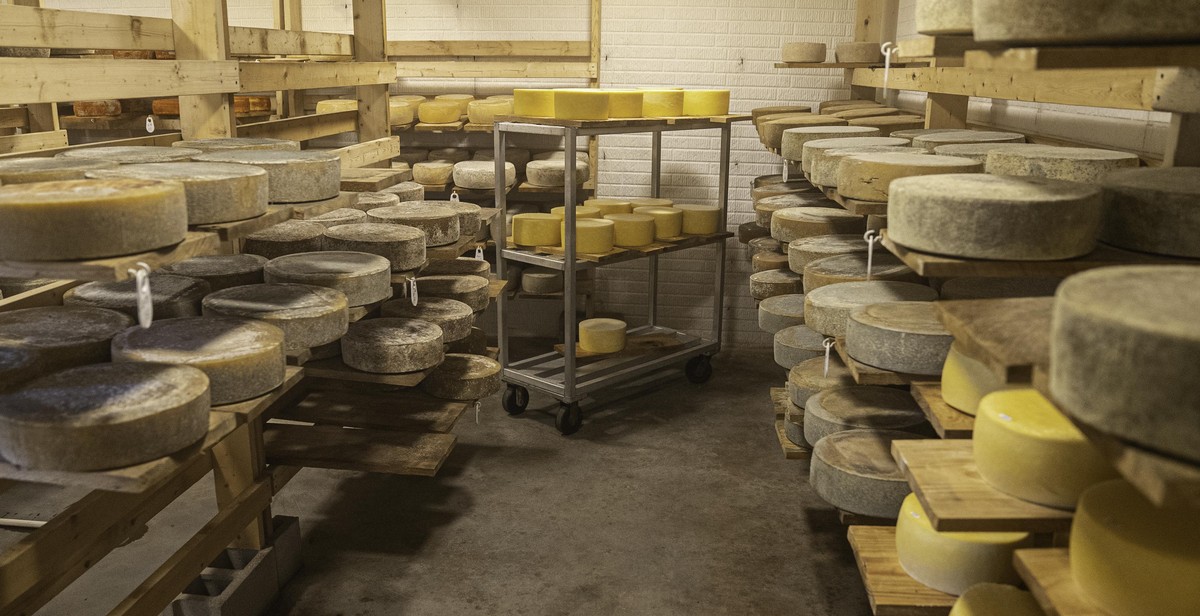How to Store Cheese Properly: Guidelines for Maximizing Freshness and Flavor
As a professional food writer and cheese enthusiast, I have learned that proper storage is crucial for maintaining the quality and flavor of cheese. Whether you are a cheese lover or a food professional, you know that cheese is a delicate product that requires special attention. Cheese is a living product that continues to age and develop even after being cut from the wheel. Therefore, it is important to store cheese properly to maximize its freshness and flavor.
Why Proper Cheese Storage is Important
Cheese is a perishable food that can easily spoil if not stored correctly. The wrong storage conditions can cause cheese to dry out, become moldy, or lose its flavor. Proper storage helps to prevent these issues and ensure that your cheese stays fresh and tasty for as long as possible.
Basic Guidelines for Cheese Storage
Here are some basic guidelines to follow when storing cheese:
- Keep cheese in the refrigerator
- Store cheese in the original packaging or wrap it in parchment paper
- Avoid storing cheese in plastic wrap or containers
- Store different types of cheese separately to prevent flavor transfer
- Remove cheese from the refrigerator 30 minutes before serving to allow it to come to room temperature
In this article, we will explore these guidelines in more detail and provide additional tips for storing different types of cheese.

Why Proper Cheese Storage is Important
Proper cheese storage is essential to maintain the quality, flavor, and freshness of your cheese. Cheese is a perishable product and requires specific storage conditions to prevent spoilage and preserve its taste. When stored correctly, cheese can last longer and taste better, enhancing your culinary experience.
Prevents Spoilage
Improper cheese storage can lead to spoilage, which can cause the cheese to develop mold, bacteria, and an unpleasant odor. Cheese is a living food that continues to mature and develop even after it is made. If not stored correctly, the cheese can spoil quickly, ruining the taste and texture.
Preserves Flavor and Aroma
Proper cheese storage helps to preserve the flavor and aroma of the cheese. Cheese is a delicate food that can easily absorb odors and flavors from the surrounding environment. Storing cheese in the correct conditions can help to prevent flavor contamination and preserve the unique taste of each cheese variety.
Prevents Drying Out
Cheese can dry out quickly if not stored correctly, leading to a hard texture and a loss of flavor. Cheese needs to be stored in a moist environment to prevent it from drying out. The correct storage method can help to maintain the moisture content of the cheese, ensuring that it stays fresh and delicious for longer.
Maximizes Shelf Life
Proper cheese storage can help to maximize the shelf life of your cheese. Cheese can be expensive, and you don’t want to waste money by throwing away spoiled cheese. By storing your cheese correctly, you can extend its shelf life and get the most out of your purchase.
Overall, proper cheese storage is essential to maintain the quality and freshness of your cheese. By following the guidelines for proper cheese storage, you can ensure that your cheese stays delicious and enjoyable for as long as possible.

Factors Affecting Cheese Storage
Cheese is a highly perishable food item that requires proper storage to maintain its freshness and flavor. There are several factors that affect cheese storage, including temperature, humidity, and airflow.
Temperature
The ideal temperature for storing cheese is between 35°F and 45°F. At this temperature range, cheese can maintain its flavor and texture for an extended period. However, storing cheese at a temperature above or below this range can cause the cheese to spoil quickly.
When storing cheese, it’s essential to keep it away from heat sources such as direct sunlight, stoves, and ovens. High temperatures can cause the cheese to melt, resulting in a loss of flavor and texture.
Humidity
The level of humidity in the storage environment is also crucial for maintaining cheese freshness. Cheese should be stored in a humid environment with a humidity level of 80% to 90%. This level of humidity helps to prevent the cheese from drying out and developing a hard texture.
However, excessive humidity can cause the cheese to become slimy and moldy. Therefore, it’s essential to ensure that the storage environment is well-ventilated to prevent the buildup of excess moisture.
Airflow
Airflow is another critical factor in cheese storage. Cheese should be stored in a well-ventilated area to allow air to circulate around it. Proper airflow helps to prevent the growth of mold and bacteria that can cause the cheese to spoil quickly.
However, it’s essential to avoid storing cheese in an area with too much airflow, such as near an air conditioning vent. Excessive airflow can cause the cheese to dry out and develop a hard texture.
Conclusion
Proper storage is essential for maintaining the freshness and flavor of cheese. By considering the factors of temperature, humidity, and airflow, you can ensure that your cheese stays fresh and delicious for an extended period.

Different Types of Cheese and Their Storage Requirements
When it comes to cheese, there are many different types available, each with its own unique flavor, texture, and storage requirements. Understanding the different types of cheese and how to store them properly is key to maximizing their freshness and flavor. Here are some guidelines for storing four common types of cheese:
Soft Cheese
Soft cheeses like brie, camembert, and goat cheese are known for their creamy texture and mild flavor. These cheeses should be stored in the refrigerator in their original packaging until ready to use. Once opened, wrap the cheese tightly in plastic wrap or aluminum foil and return it to the refrigerator. Soft cheeses should be consumed within one week of opening to ensure freshness.
Hard Cheese
Hard cheeses like cheddar, parmesan, and gouda are aged and have a firmer texture and stronger flavor than soft cheeses. These cheeses should be stored in the refrigerator in an airtight container or wrapped tightly in plastic wrap or aluminum foil to prevent them from drying out. Hard cheeses can be stored for several weeks or even months if stored properly.
Blue Cheese
Blue cheeses like gorgonzola and roquefort are known for their distinct blue veins and sharp flavor. These cheeses should be stored in the refrigerator in their original packaging or wrapped tightly in aluminum foil or plastic wrap. Blue cheeses should be consumed within one week of opening to ensure freshness.
Fresh Cheese
Fresh cheeses like feta, ricotta, and cottage cheese are unripened and have a mild flavor and soft texture. These cheeses should be stored in the refrigerator in their original packaging or an airtight container. Fresh cheeses should be consumed within one week of opening to ensure freshness.
| Cheese Type | Storage Method | Shelf Life |
|---|---|---|
| Soft Cheese | Refrigerate in original packaging, wrap tightly once opened | 1 week |
| Hard Cheese | Store in airtight container or wrap tightly in plastic wrap or aluminum foil | Several weeks to months |
| Blue Cheese | Refrigerate in original packaging, wrap tightly once opened | 1 week |
| Fresh Cheese | Refrigerate in original packaging or airtight container | 1 week |

Tips for Proper Cheese Storage
Proper cheese storage is crucial to maximize its freshness and flavor. Here are some tips to help you store cheese the right way:
Wrap Cheese Properly
When storing cheese, it is important to wrap it properly to prevent it from drying out. Use wax paper or parchment paper to wrap the cheese, then cover it with plastic wrap or aluminum foil. This will help to retain moisture and prevent the cheese from drying out.
Store Cheese in the Right Temperature
Cheese should be stored at the right temperature to prevent it from spoiling. Most cheeses should be stored in the refrigerator at a temperature between 35°F to 45°F. However, some cheeses like Parmesan can be stored at room temperature.
Keep Cheese in a Humid Environment
Cheese needs to be stored in a humid environment to prevent it from drying out. To create a humid environment, you can place a damp paper towel in the container with the cheese or use a cheese storage container with a humidifier.
Avoid Storing Cheese in Plastic
Storing cheese in plastic can cause it to sweat and promote the growth of mold. Instead, use wax paper or parchment paper to wrap the cheese, then cover it with plastic wrap or aluminum foil.
Store Cheese in the Correct Part of the Fridge
Cheese should be stored in the warmest part of the fridge, which is usually the top shelf or the cheese drawer. This will prevent it from getting too cold and drying out.
| Do’s | Don’ts |
|---|---|
|
|

Conclusion
Storing cheese properly is essential to ensure that it retains its freshness and flavor. By following the guidelines outlined in this article, you can enjoy your favorite cheeses for longer periods of time and avoid waste. Remember to:
- Keep cheese in the refrigerator
- Wrap it tightly in wax paper or plastic wrap
- Avoid using aluminum foil or plastic bags
- Store different types of cheese separately
- Bring cheese to room temperature before serving
Additionally, it’s important to note that some cheeses may have specific storage requirements. For example, soft cheeses like brie and camembert should be stored in their original packaging, while hard cheeses like cheddar and parmesan can be stored in a cheese dome or on a cheese board. Always check the label or ask the cheesemonger for specific storage instructions.
By following these guidelines and taking proper care of your cheese, you can enjoy its full flavor and texture. Experiment with different types of cheese and storage methods to find what works best for you. Happy cheese storing!
